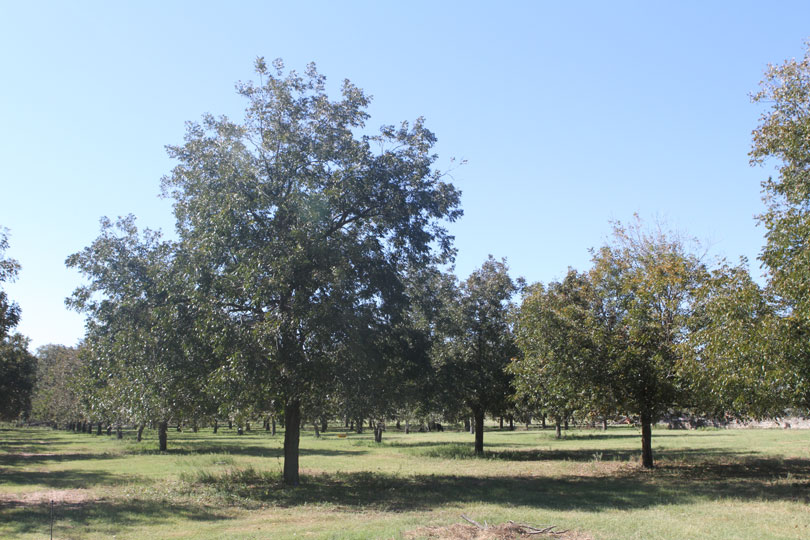By Justin Walker
Communications Specialist
Some holiday dessert tables may be missing a fan favorite this year.
It looks to be another subpar year for Texas pecans, despite early season moisture, according to a Texas A&M AgriLife Extension Service expert.
Pecan yield estimates are significantly lower than the annual average, Dr. Larry Stein, AgriLife Extension fruit specialist in Uvalde, said. Texas pecan trees typically produce about 50 million pounds of pecans, but growers are expecting 30-36 million in 2019.
“This year is hit and miss for much of the pecan-producing areas, especially West Texas,” Stein said. “Producers there had a big crop in 2018, and it’s typical to see yields drop off after a big harvest. But it looks like they really dropped off around the state. South Texas looks to be having a good year, but again, it’s been hit and miss this season overall.”
It will be a second consecutive year of poor pecan yields in the Lone Star State.
Texas pecan production came in at 33.6 million from 112,000 acres in 2018, according to the U.S. Department of Agriculture June summary report. Those numbers were down from 2017, where 48.99 million pounds were produced from 115,000 acres.
There was hope for a good year when the report was released, as moisture levels looked positive. But conditions have changed over the last six weeks, Stein said. Nut sizes are larger due to the previous conditions, so it will take plenty of fertilizer and water to properly fill the kernel.
“The big challenge at this point is that it takes water and nitrogen to fill the kernels, and most areas of the state have been missing rain for the last two months,” he said. “Irrigation will be key if we don’t start seeing some timely rains.”
Trees need to receive two inches of water each week until shuck split, Stein said. This should continue, with an irrigation supplement, through either mid-September or the first good fall rain to prevent winter stress.
Despite struggles, growers who have thinned trees, treated for pests and followed irrigation recommendations should see positive yields and quality, Stein said.
“The good news is that we’ve had good deep soil moisture,” he said. “We couldn’t say that just a few years ago. It’s just now getting dry, so we just need to feed and water the trees and watch for bugs that want our pecans.”

